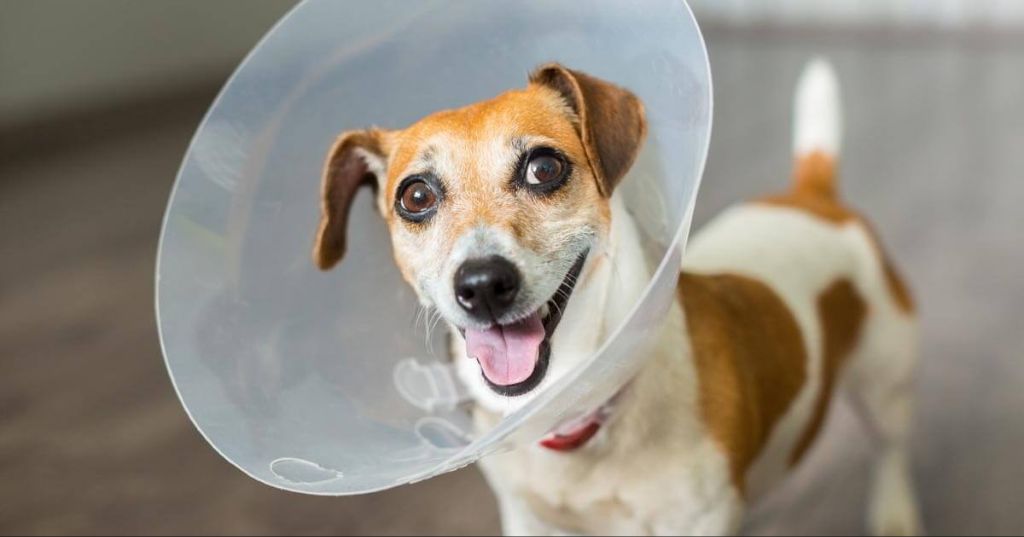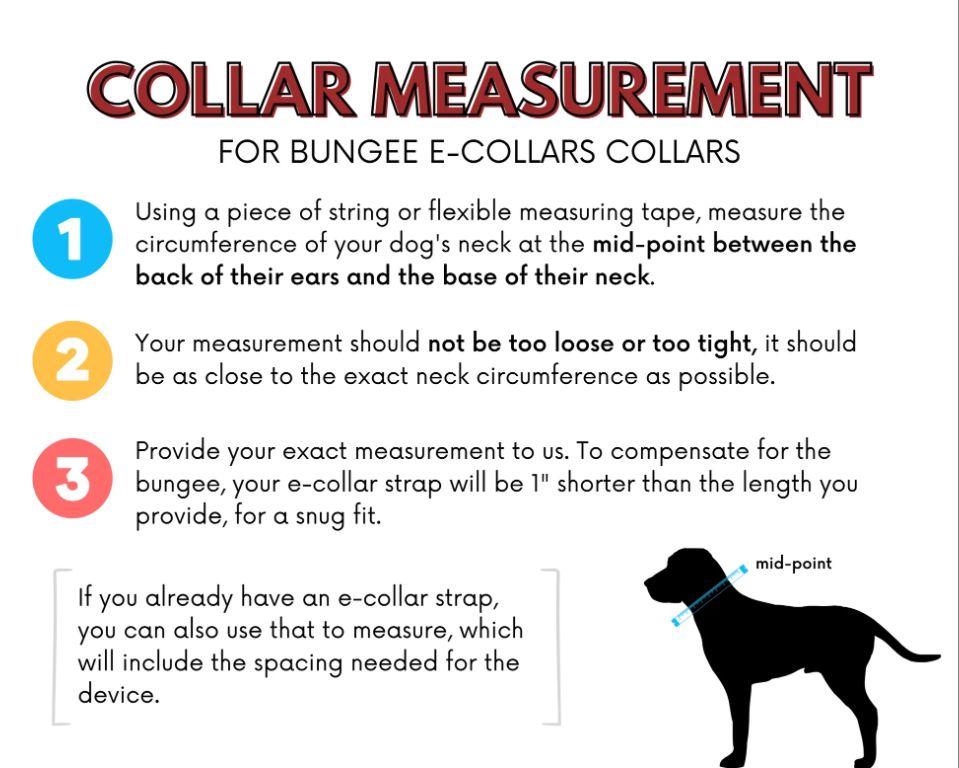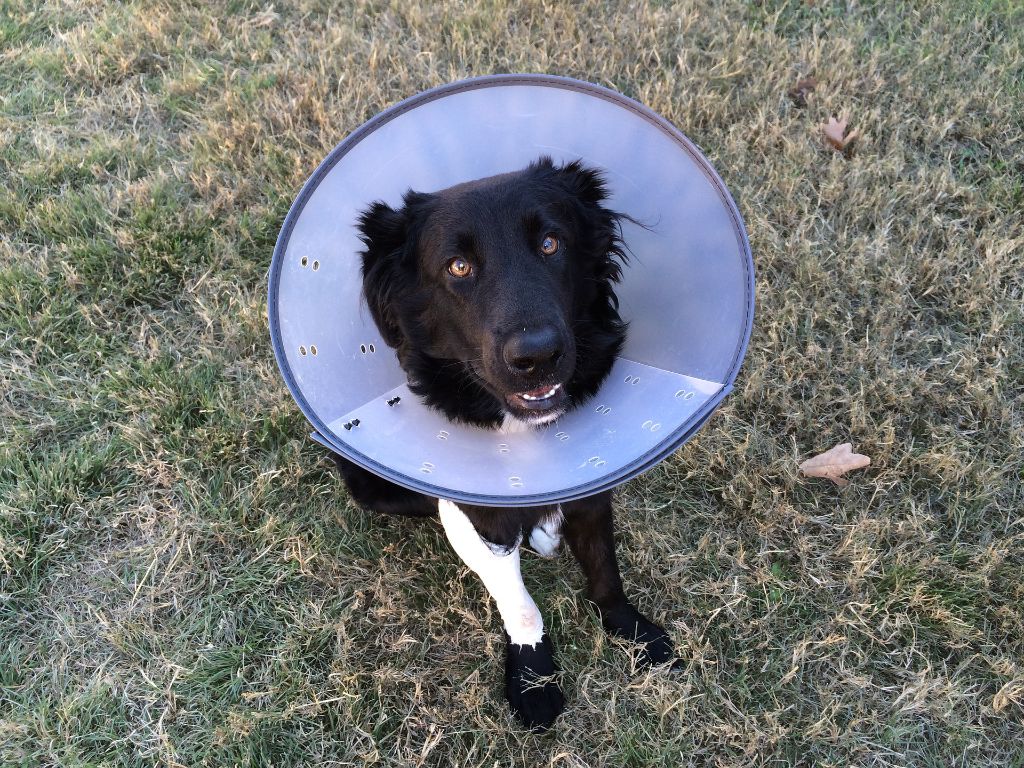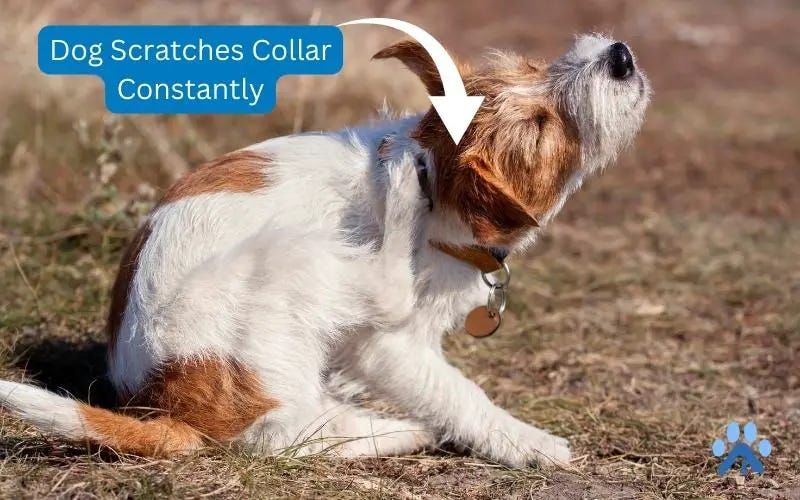Introduction
An e-collar, also known as an Elizabethan collar, is a protective cone-shaped collar that is placed around a dog’s neck after surgery. The purpose of the e-collar is to prevent the dog from licking, biting, or scratching at its surgical site or wound while it is healing. The stiff plastic prevents the dog from being able to reach the sutures with its mouth or paws, which could lead to irritation, infection, or disruption of the incision if the dog were to mess with it (https://topdoghealth.com/e-collars-cones-and-alternatives/). E-collars allow surgical sites, wounds, incisions, and bandages to heal properly without disruption. They are an important tool for managing dogs in the post-operative period.
Why Dogs Need E-Collars After Surgery
Dogs often need to wear e-collars, also known as cone collars, after undergoing surgery or suffering an injury. This is to prevent them from licking, biting, or scratching at their incision site or wound. Dogs’ instinct is to lick themselves to self-soothe, groom, and clean. However, this natural behavior can be extremely detrimental after surgery.
As the American Kennel Club explains, “Dogs should not lick their incision site or chew their sutures. Both of these behaviors will impede healing and can cause infections or open the incision back up.” https://www.akc.org/expert-advice/health/dog-cone-alternatives/
Licking, chewing and scratching can introduce bacteria and cause inflammation or more bleeding around surgical sites. It can also loosen or remove stitches or surgical staples. At best this will delay healing, at worst it can lead to serious complications requiring additional veterinary treatment.
Wearing an e-collar prevents the dog from being able to reach the incision site or wound until it has had time to begin healing, which is usually at least 7-10 days. E-collars allow surgical sites, wounds and injuries to heal properly without disruption from the dog.
Types of E-Collars
There are three main types of e-collars used for dogs after surgery:
Hard Plastic E-Collars
Hard plastic e-collars, sometimes called lampshades or the “cone of shame”, are the most common and widely used. They are rigid plastic cones that fully encircle the dog’s head and prevent access to the body. Hard plastic e-collars come in different sizes to fit the dog. While effective at preventing licking and chewing, many dogs dislike the rigid plastic pressing on their neck. Hard plastic e-collars can be purchased affordably online or at pet stores.

Inflatable E-Collars
Inflatable e-collars are made from soft inflatable plastic and are more flexible and lightweight than hard plastic. They can be deflated for eating and drinking and inflated when needed to prevent licking. Inflatable collars allow for better peripheral vision and are often more comfortable for dogs. However, some dogs can still access their wounds with inflatable collars. Brands like KONG and BiteNot offer inflatable e-collar options.
Soft Fabric E-Collars
Soft fabric e-collars provide an alternative to rigid plastic for increased comfort. They are made from soft fabrics like fleece, cotton, and neoprene. Soft collars are lightweight and allow dogs to eat, drink, and sleep more comfortably. However, they may not prevent licking and chewing as effectively as hard plastic. Soft collars often have Velcro closures for adjustability. Examples include the Comfy Cone and Suitical Recovery Suit.
When to Use an E-Collar
Veterinarians typically recommend using an e-collar for 7-10 days after a surgical procedure. However, the exact length of time depends on the type of surgery the dog has undergone.
For minor surgeries like neutering or dental cleanings, 7-10 days of e-collar use is usually sufficient. The incision area is relatively small and heals quickly. Limiting licking and biting for the first week allows the area to close up properly.
More invasive surgeries like tumor removal or orthopedic procedures require longer e-collar use, sometimes up to 2-3 weeks. There are larger incisions that take more time to heal and have a higher risk of complications if interfered with. Using an e-collar for a few extra days ensures the surgical site is fully closed with no infection or dehiscence.
Ultimately, dog owners should follow their veterinarian’s specific e-collar recommendations based on the type of surgery, location of incision, and other factors unique to the dog. The vet knows best when it comes to protecting surgical sites during the healing process.
Putting On and Taking Off
Putting an e-collar on your dog properly is important for their comfort and recovery. Here are some tips for getting it on and off:
Putting It On:
- Have your dog sit or lay down. Keep them calm and relaxed.
- Gently slide their head through the e-collar opening. Center it around their neck.
- Fasten the collar snugly but not too tight. You should be able to fit 2 fingers between the collar and their neck.
- Check that they can breathe and swallow comfortably.
- Give them a treat and praise to reinforce it’s not something negative.

Taking It Off:
- Have your dog sit or lay down calmly.
- Unfasten the collar and gently slide it off over their head.
- Immediately give praise and/or a treat.
- Slowly increase the time with the collar off as the incision heals.
Watch our video below for a demonstration on properly putting on and taking off an e-collar:
[VIDEO DEMONSTRATION]
Caring for the Dog While Wearing an E-Collar
Wearing an e-collar can be an adjustment for dogs, so it’s important to take some special care of your pet while they have it on. Here are some tips for caring for a dog with an e-collar:
Feeding: Place food and water bowls on an elevated stand or small table so the rim sits high enough for the dog to reach under the e-collar. You can also remove the collar at meal times if supervised closely.
Exercise: Avoid strenuous exercise and activities that could dislodge the e-collar. Short, leash-controlled walks are ideal. No running, jumping, or rough play.
Grooming: Bathe and brush as needed, but avoid getting the collar wet. Check under the edges for irritation. You may need to trim fur if it’s catching on the collar.
Supervision: Keep a close eye on your dog when the e-collar is on. Make sure it stays securely fastened. Watch for signs of excessive scratching or rubbing.
Patience and praise: Offer lots of affection, treats, and verbal reassurance. Help your dog adjust gradually and stay calm.
Comfort: Provide soft bedding. Consider a padded collar or placing soft socks over the edges for more comfort.

Activity: Engage your dog mentally with chew toys, training, and one-on-one play like gentle tug and fetch.
Rest: Allow ample rest time without the e-collar on when you are directly supervising.
Contact your veterinarian if you have any concerns about caring for your dog while they wear an e-collar after surgery.
Potential Problems
Some dogs can have issues adjusting to wearing an e-collar or cone after surgery. According to the University of Sydney, dogs often find e-collars unpleasant and can experience irritation and anxiety from having to wear them.
The stiffness and size of the cone can make some dogs irritable. The collar can block their vision and prevent them from being able to eat, drink, and rest comfortably. Dogs that are anxious may pace, vocalize, or refuse to settle down. Some dogs may even refuse to move or walk while wearing an e-collar.
To reduce anxiety, it’s important to frequently check on your dog, provide affection, keep them in a safe enclosed area, and remove the cone for short supervised breaks. Work on positive reinforcement training to help them gradually adjust to the e-collar. If they remain very distressed, talk to your vet about alternatives such as an inflatable collar.
Training the Dog to Accept the E-Collar
It’s important to take some time to train your dog to accept wearing an e-collar calmly before their surgery. This will help make the recovery process much smoother. Focus on positive reinforcement by giving your dog treats and praise when they have the e-collar on. Start with short sessions of just a few minutes at a time and gradually increase the duration.
Place some peanut butter or spray cheese on the edges of the e-collar so your dog associates it with something tasty. Reward calm behavior and don’t react negatively if your dog tries to paw at the collar at first. Simply redirect their attention to a chew toy or another command they know well. Be patient as your dog adjusts to this new sensation. With time and consistency, your dog will learn to tolerate the e-collar without issue.
You can also try feeding your dog or giving treats through the opening of the cone to create a positive experience. Praise and reassure your dog often so they know they are still a good dog, even with the odd collar accessory. Stay positive and keep training sessions relaxed and stress-free.
If introducing the e-collar shortly after surgery, go slow and give your dog time to adjust. The anesthesia and pain medications may make them initially unsteady or anxious. With your guidance and encouragement through this transition, your dog will adapt to the e-collar quickly.
Alternatives to E-Collars
While the traditional plastic or fabric e-collar is commonly used after surgery, there are some alternative options that can provide protection and comfort for your dog.
Onesies and recovery suits are a popular alternative that cover the dog’s body and prevent access to the incision site. They are made of soft, breathable fabric and can be worn comfortably. Some even have Velcro or snaps to allow access for going to the bathroom. According to one source, specialized dog onesies like Suitical Recovery Suits provide full coverage while letting dogs move freely.
Inflatable collars, also called donuts, are another option that provides protection while being more flexible and less cumbersome than plastic cones. Brands like E-Komg make inflatable collars that are lightweight yet sturdy. They are also great for dogs who have high anxiety about wearing collars.
Anxiety wraps apply gentle pressure to help dogs remain calm. These can be worn in addition to an e-collar to provide comfort to anxious or skittish dogs. Wraps like ThunderShirt are easy to put on and take off while managing stress.
Talk to your vet about the options that are best for your dog and their specific needs after surgery. With the right alternative, you can keep your dog protected while optimizing comfort during the recovery process.
When to Call the Vet
Despite the protection e-collars provide, wearing one for an extended period can cause irritation and discomfort. Signs to watch for include:
-
Excessive scratching or rubbing at the collar – this can lead to skin irritation or hot spots
-
Redness, sores, or hair loss around the neck – indicating the collar size is too small or the material is irritating
-
Discharge or foul odor around the incision – a sign of infection that needs medical attention
-
Depression, lethargy, loss of appetite – some dogs have trouble adjusting to an e-collar
-
Excessive panting, drooling or anxiety – wearing a collar causes stress for some dogs

If you notice any of these concerning symptoms, contact your veterinarian. They can evaluate if the collar needs adjustment or if medication is needed to reduce anxiety or infection. Do not remove the e-collar until your vet advises it is safe to do so.
Most dogs tolerate e-collars well, but others may need medication or alternatives to make it through the recovery period. With proper adjustment and supervision, e-collars protect surgical sites while healing occurs.
Source: https://vcahospitals.com/know-your-pet/elizabethan-collars-in-dogs